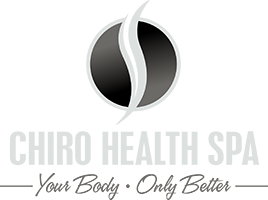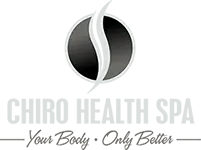Once we have evaluated all of the information, we then choose from several therapies, depending upon your condition:
Specific Chiropractic Adjustments
At its core, the spine wants to be neutral. When bones are out of their normal position (sometimes one in a section of your spine, sometimes several), the result is a gradually weakening posture and pressure on the nerves between the bones. By reducing the misalignments in those areas, the spine gets more freedom of motion, allowing its function to improve. We find that improving this alignment with chiropractic adjustments can be significant in reducing the frequency and intensity of sciatica.
Custom Therapeutic Exercise Plan
Trying to recover from sciatica can’t fully occur if there is muscle weakness or imbalance. If your muscles have been fighting a bad posture for many years (maybe even exaggerated by long hours at a computer, driving, or sitting), getting them strong is a priority.
We often find people with sciatica present with limited range of motion in the low back. Therefore, we start by increasing flexibility. Once your range has improved, we then can focus on building your strength. It takes consistency, so we give you a customized exercise plan for both in-office and at home to make sure you’re able to keep aggravating episodes to a minimum, both in frequency and intensity.
Lumbar Spinal Decompression
There are occasions where sciatica may be caused by a bulging or herniated disc in your low back, putting direct pressure on highly sensitive nerves. In these cases, spinal decompression is a highly effective therapy that gently pulls your hips away from your lower ribs. This allows the muscles in your low back to relax while relieving the disc pressure on your nerves.
As with exercise, consistency of decompression is important to change muscle patterns that have been set in for a long time. But the results, in conjunction with spinal adjustments and your customized exercises, can be significant.
Electrical Muscle Stimulation
In the initial stages of care, we are looking to reduce muscle spasms and tension along the pathway of the sciatic nerve. Electrical muscle stimulation is used to accelerate that process, allowing you to feel better and alleviate the low back and/or buttock stiffness often associated with sciatica. Most people say e-stim feels like a light massage and often comment how much looser they feel when it’s done.
Posture Rehabilitation
If your sciatica improves but your posture is still poor, the likelihood of having relapses is high. Putting in a plan to create and stabilize good, strong posture is your key to having the longest-lasting results. We’ll utilize various forms of therapy to put your posture in the “mirror image” – essentially, the exact opposite posture that you currently have. (Let’s face it – that posture isn’t helping you, or you wouldn’t have sciatica!)
By performing mirror image exercises and traction, your body will gradually learn what “correct” posture is. Each time, in-office and at home, your body goes into the mirror image, it’s another signal to the brain, your bones, and your muscles to dump the old, bad patterns and create new, stronger patterns. This may be the most overlooked aspect of low back pain; there’s no way a weak posture can help you get better.
Acupuncture
Acupuncture can help remove negative energy and restore positive energy throughout your body. By focusing on specific points and zones in your body, endorphins (the “feel-good” hormones) get released, and that triggers a positive response throughout the body.
Acupuncture has been used for both acute and chronic sciatica and can be very beneficial, either on its own or in conjunction with chiropractic and postural rehabilitation.
Supplements and Other At-Home Remedies
Depending on the cause of your sciatica, certain nutritional supplements may be worthwhile. However, each case is different, which means your nutritional recommendations may be quite different than someone else you know with sciatica. We’ll often recommend certain topical gels or ointments to relieve muscle tension and reduce pain. Some of our recommendations can even be purchased in your local grocery store or health food store.
Lifestyle Changes
Given that we’re working for 8-10 hours a day and sleeping 6-8 hours, whatever posture you’re in had better be right for that amount of time! It’s important that you know how to sleep, how to bend and lift, and how to sit at your computer. It’s just as important to know what not to do. Sometimes simple shifts make the biggest differences, and that’s especially true when it comes to your daily habits. We’ll make sure you know what those shifts are to avoid injury and get the best results in our office.


